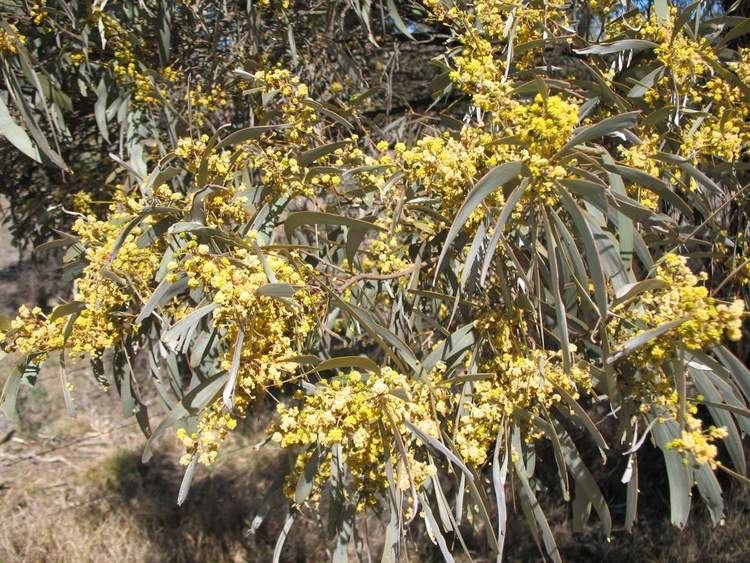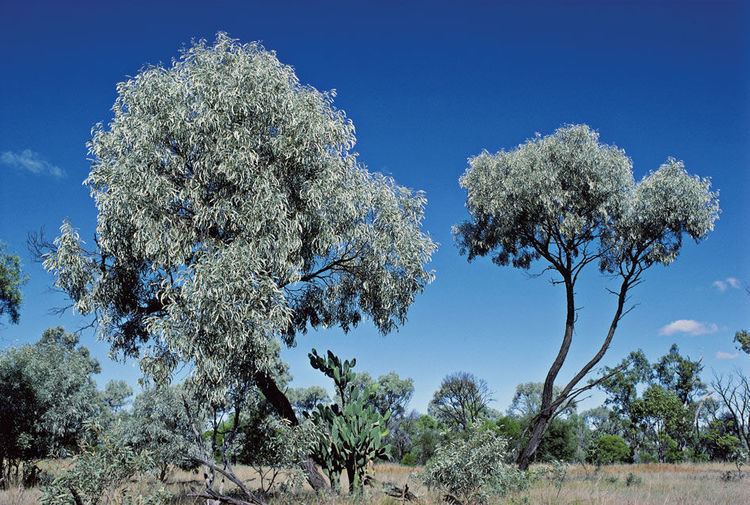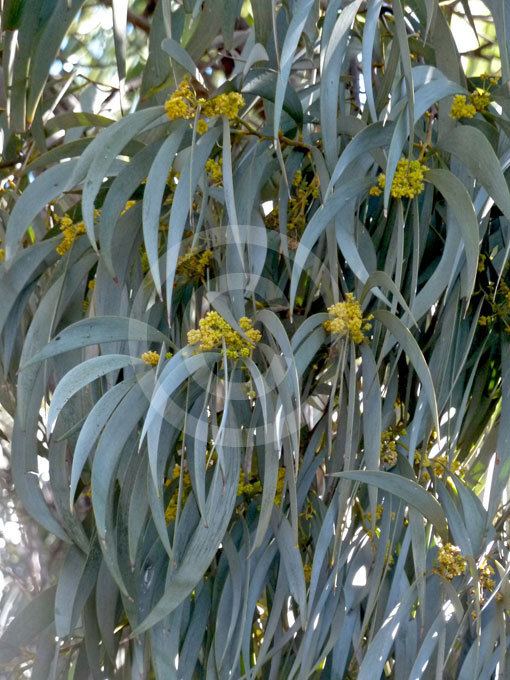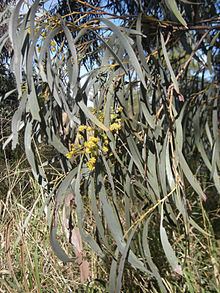Genus Acacia Rank Species | ||
 | ||
Similar Eucalyptus populnea, Acacia cambagei, Casuarina cristata, Acacia aneura, Acacia pendula | ||
Acacia harpophylla, commonly known as brigalow, brigalow spearwood or orkor is an endemic tree of Australia. It is found in central and coastal Queensland to northern New South Wales. It can reach up to 25 metres tall and forms extensive open-forest communities on clay soils.

Two species, brigalow (A. harpophylla) and gidgee (A. cambagei) form open woodlands on flat and gently undulating terrain on heavy and relatively fertile clay and clay-loam soils primarily in the 300-700mm annual rainfall region of Eastern Australia. These woodlands extend from a northern extreme of 20o S into northern New South Wales. Brigalow and gidgee occur as mixed communities in some regions and are commonly associated with several other woody species, including overstorey species such as Eucalyptus coolabah, E. cambageana, Casuarina cristata, and a range of understorey species. A. tephrina, A. georginae and A. argyrodendron also occupy similar habitats and have similar habits and growth forms, but are less widespread, while a number of other Acacia species also form structurally similar communities

Brigalow occurs from coastal regions receiving in excess of 900mm rainfall per year through to the semi arid 500mm rainfall region although it is primarily a semi-arid zone species. Gidgee (A. cambagei) replaces brigalow as rainfall drops in western regions and extends from 650mm-300mm. Gidgee, with a maximum height of approximately 12 metres is somewhat smaller than brigalow which can attain heights of 20 metres. In the north-western regions Black gidgee (A. argyrodendron) replaces brigalow in many areas, while in Central-Western districts Boree (A. tephrina) forms woodlands and shrublands, frequently on cracking clay soils and often in association with A. cambagei. Georgina gidgee (A. georginae) woodlands are found in more arid regions in the 200-250mm rainfall belt.

Species associated with these brigalow communities generally have a good capacity for re-sprouting following fire, and brigalow itself sprouts freely from the butt, roots and living stems in response to fire damage. Both gidgee and blackwood, in contrast, have a limited capacity to resprout following fire damage. A notable exception to the fire tolerance of brigalow communities occurs in what are referred to as softwood scrubs, which are dense communities of brigalow and a range of particularly fire-sensitive species. Fire in any brigalow or gidgee woodland would be a rare event under natural circumstances, since pasture is at best sparse in these communities, consisting of Chloris, Paspalidium, Dicanthium, Sporobolus and Eragrostis species.

